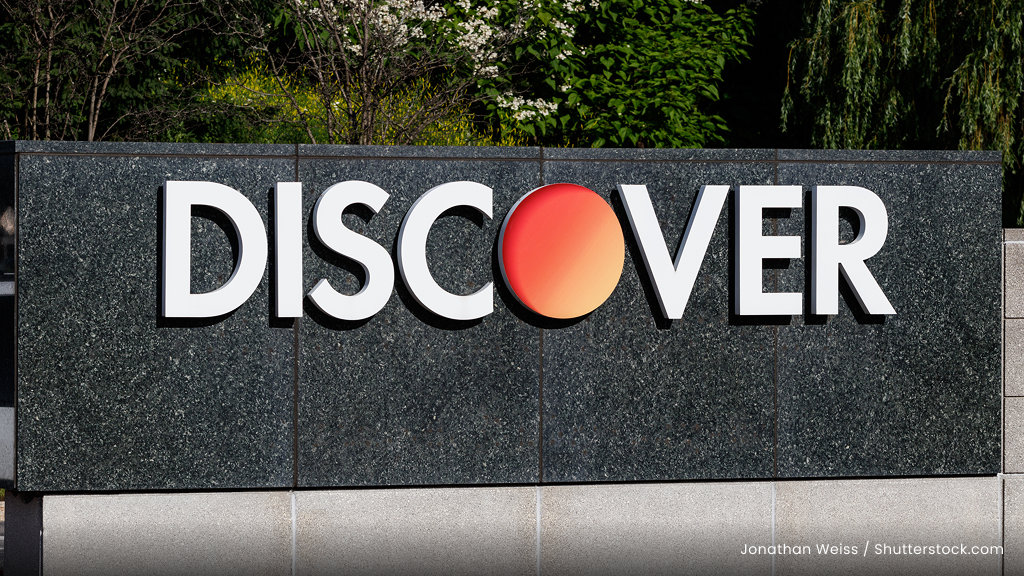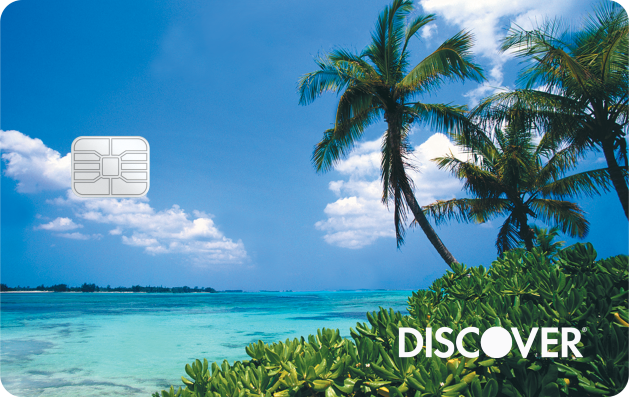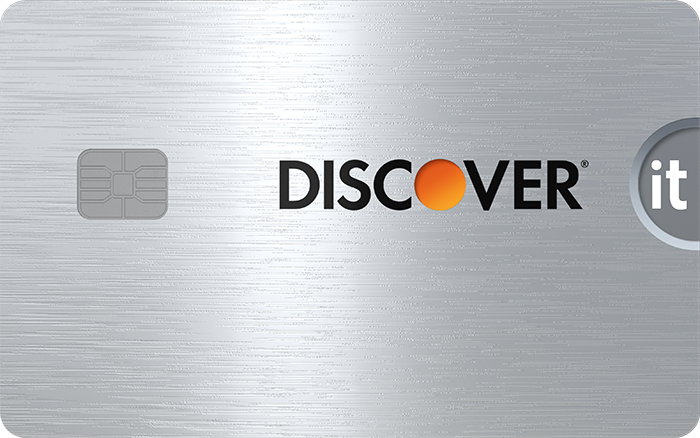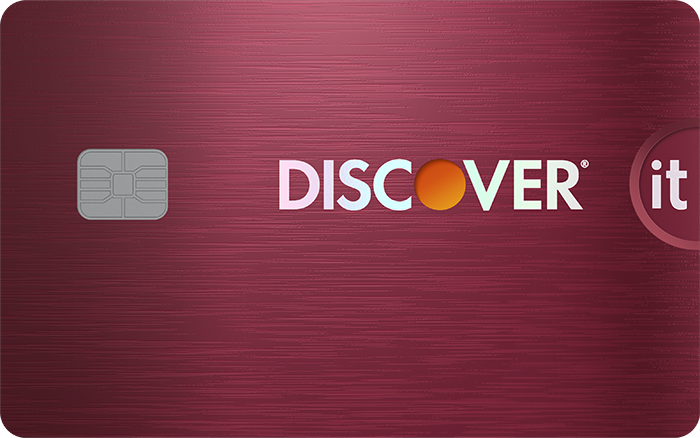Discover Card Foreign Transaction Fees: A Complete Guide for Travelers

Foreign transaction fees are common on purchases abroad, and they can significantly increase your travel expenses. The good news is there are plenty of cards, including many popular travel cards, that waive these fees for all purchases.
Discover is one of few card issuers and the only major credit card network that doesn’t charge any foreign transaction fees, so it’s worth considering for your next trip. However, it’s important to weigh all card benefits, including other travel perks and fees.
Discover offers several different credit cards that are tailored to students, travelers, sports enthusiasts and more. Three of the top credit cards available are:
- Discover it® Cash Back: Earn 5% Cash Back At Different Places Each Quarter Up To The Quarterly Maximum When You Activate. Earn 1% Unlimited Cash Back On All Other Purchases - Automatically.
- Discover it® Chrome: Enjoy a 0% Intro APR on purchases for 6 months and 0% Intro APR on balance transfers for 18 months, followed by 18.24% - 27.24% Variable APR
- Discover it® Miles: Earn an unlimited 1.5x miles per dollar spent on all purchases
What Are Foreign Transaction Fees?
A foreign transaction fee is a fee that credit card issuers often charge on foreign transactions, typically as a percentage of the purchase price. These fees typically vary from 1% to 3%.
For example, the Chase Freedom Unlimited® card charges a 3% foreign transaction fee. If you used that card to make a $100 purchase abroad, you’d pay a $3 fee.
While most credit issuers charge foreign transaction fees, many waive them on certain cards, especially premium and travel credit cards.
Does Discover Card Have Foreign Transaction Fees?
Discover doesn’t charge foreign transaction fees on any of its cards. In fact, it’s one of few card issuers that doesn’t charge them across their entire card catalog.
However, that doesn’t mean it’ll be entirely free to use your Discover card overseas. First, you could still be subject to merchant fees, which are charged by the retailer. Additionally, if you use an ATM in a foreign country, there’s a good chance you’ll end up paying an ATM fee (though Discover itself doesn’t charge one).
Finally, you should also expect to pay an exchange rate when shopping in a country with another currency. The exchange rate you’ll be charged may vary depending on whether you choose to pay in the local currency or your home currency. You should always choose to pay in the local currency since stores and restaurants can set their own exchange rates and make your purchase more expensive than they should be.
Where Can You Use Discover Cards Abroad?
Discover is accepted in more than 200 countries and territories around the world. Millions of businesses globally accepted the Discover Network for credit card payments.
You can use your Discover card in most countries in:
- North America
- Central and South America
- Western Europe
- Asia
Notably, you won’t be able to use your Discover card in most of Africa, much of the Middle East, or Russia. To see each individual country that Discover is accepted in, you can see the card issuer’s international acceptance map.
Your Discover card should also be accepted at any location that accepts Diners Club International, which is accepted in more than 200 countries and territories, and at any PULSE ATM, which you can find in 143 countries.
How Does Discover Card Compare to Other Credit Cards?
Discover is one of several major credit card networks, along with Visa, Mastercard and American Express. It’s the only major network that doesn’t charge any foreign transaction fees. For the rest of the networks, whether you’re charged a fee and the percent fee you’re charged varies based on the individual card.
The most common foreign transaction fee is around 3%, though some cards charge a bit less (like the Blue Cash Everyday® Card from American Express (an advertising partner) for example, which charges 2.7%).
While Discover is the only major network that doesn’t charge foreign transaction fees on any cards, it isn’t as universally accepted as Visa and Mastercard. Even within countries where Discover is accepted, some individual retailers may only accept Visa and Mastercard.
Tips for Using Discover Card Abroad
Using a credit card with no foreign transaction fees is a great way to save money on your travels, as these fees can really add up. However, it’s important to be prepared. Here are some tips for using your Discover card abroad with the most success:
- Notify Discover of your travel plans: Discover recommends that you notify them of any international travel to ensure you’re able to use your card without any issues. You can easily let them know in the “Register Travel” portal in your Discover account.
- Check Discover’s acceptance: Discover has a map of all the countries where it’s accepted. Make sure to check this map before your trip to ensure your card will work there.
- Carry a backup payment option: Even if you’re traveling to a country where Discover is accepted, individual retailers may not accept it. It’s always best to have at least one other payment method (preferably another credit card with no foreign transaction fees).
Dynamic Currency Conversion Fees Explained
Dynamic currency conversion (DCC) is a process that allows cardholders to choose between paying in the local currency or paying in their home currency, which bakes the exchange rate and fees into the purchase price. Many shoppers prefer using DCC so they know exactly how much they’re spending in their own currency.
That being said, DCC may be less favorable than simply paying in the local currency. According to Discover, a DCC fee may be imposed on top of any other fees you’re paying, even if your card doesn’t have foreign transaction fees. Additionally, there’s often an exchange rate markup, meaning the transaction ultimately costs you more money.
The good news is you don’t have to use DCC — you can simply opt to use the local currency when you’re making a purchase in another country. You’ll still pay any foreign transaction fees that your card charges, but you could pay less overall.
Alternatives to Discover Card for International Travel
Discover doesn’t charge foreign transaction fees on its cards, so it’s a solid option for international travel. That being said, it doesn’t necessarily offer as many perks as some other travel cards. Here are a few other credit cards to consider for your international travels. None have foreign transaction fees, and all come with other perks that will be appealing to frequent travelers:
Chase Sapphire Preferred® Card
The Chase Sapphire Preferred® Card is one of the most popular travel credit cards on the market. It has a $95 annual fee and offers rewards for bonus categories such as travel, dining, and online grocery purchases.
It has quite a few travel perks, including an annual hotel credit, various types of travel protection and no foreign transaction fees. As a Visa card, the Sapphire Preferred Card is accepted in most places worldwide.
Want a premium version of this card? Check out the Chase Sapphire Reserve® card.
Capital One Venture Rewards Credit Card
The Capital One Venture Rewards Credit Card has an annual fee of $95 and offers bonus rewards on your travel purchases. In addition to having no foreign transaction fees, this card also offers a $50 experience credit, a Global Entry or TSA PreCheck credit every four years and travel insurance. Also on the Visa network, this card should be accepted in most places worldwide.
Want a premium version of this card? Check out the Capital One Venture X Rewards Credit Card.
American Express® Gold Card
American Express offers some of the most popular travel credit cards on the market, including the American Express® Gold Card (a CardCritics™ advertiser). With its $325 annual fee, you can earn rewards on travel, dining and groceries in the U.S. You can also earn more than $500 in value from its partners, including dining credits.
Its travel perks include no foreign transaction fees, a hotel credit with The Hotel Collection, travel insurance and more. However, as an American Express card, this one may not be as widely accepted as Visa or Mastercard.
Want a premium version of this card? Check out the The Platinum Card® from American Express.
The Bottom Line
Foreign transaction fees can create an additional cost burden when you’re traveling abroad, but you don’t have to worry about paying them when you’re using a Discover card.
That being said, Discover isn’t as widely accepted as some other major card networks. Additionally, just because Discover doesn’t charge foreign transaction fees doesn’t mean you won’t be on the hook for other payment fees. Finally, make sure to compare Discover’s lack of foreign transaction fees with its other card benefits to ensure you choose the best travel card for your situation.
Frequently Asked Questions
Where is Discover accepted internationally?
Discover is accepted in more than 200 countries and territories around the world, but that doesn’t mean it’s accepted at all places within those countries. If you’re traveling internationally, it may be worth carrying another card with you to ensure you always have an accepted payment method.
How can I notify Discover about travel plans?
You can let Discover know about your travel by logging into your account and opening the account for the card you want to use. From there, you should click “Manage,” then “Register Travel,” and enter your travel dates and destinations. According to Discover’s website, you should always let the card issuer know about your travel plans.
Are there ATM fees for Discover Card users abroad?
Discover doesn’t charge ATM fees abroad, but ATM administrators may charge fees. Additionally, your Discover card may not work at all ATMs when you’re traveling internationally since its acceptance is more limited than that of some cards.
What is dynamic currency conversion?
Dynamic currency conversion allows you to pay in your home currency when you’re in a foreign country rather than paying in the local currency. The exchange rate is included in the transaction, as are any other fees assessed.
What are the best cards for international travel without fees?
Some of the best no-fee travel credit cards include the Discover it® Miles card, Bank of America® Travel Rewards credit card, Capital One VentureOne Rewards Credit Card, Wells Fargo Autograph® Card, and more. If you’re willing to pay an annual fee, you’ll have far more options of cards to choose from.
- What Are Foreign Transaction Fees?
- Does Discover Card Have Foreign Transaction Fees?
- Where Can You Use Discover Cards Abroad?
- How Does Discover Card Compare to Other Credit Cards?
- Tips for Using Discover Card Abroad
- Dynamic Currency Conversion Fees
- Alternative Cards
- The Bottom Line
- Frequently Asked Questions











